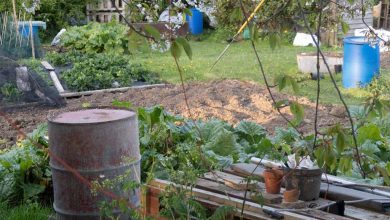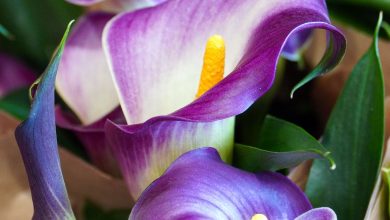The [15 Best] Durable and Hardy Houseplants
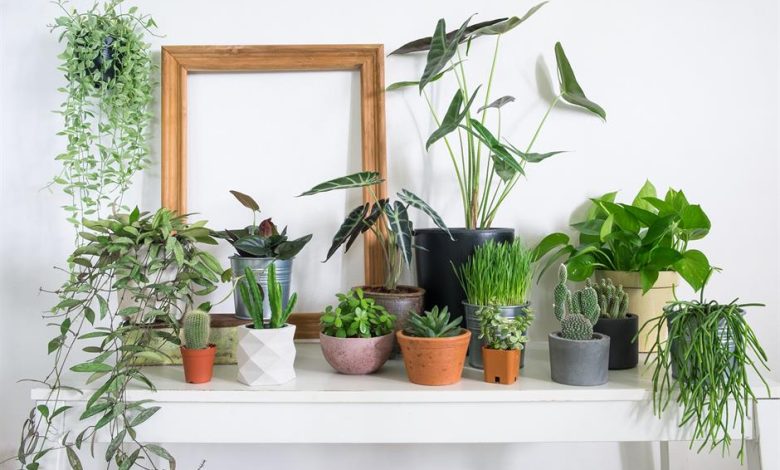
Everyone likes to have plants inside their home. But… not everyone likes having to constantly take care of them. I guess you’ll agree with me, right?
Ok, no problem. You can have indoor plants and that they are also resistant and durable.
In the following article we present a list of long-lasting indoor plants so you can plant and have them inside your homes.
Can you come with us?
lounge palm tree
 The Parlor Palm or Chamedorea elegans is the ideal plant to decorate the interior of the home, but it can also be placed on the porch, in corners, on the patio or in the garden.
The Parlor Palm or Chamedorea elegans is the ideal plant to decorate the interior of the home, but it can also be placed on the porch, in corners, on the patio or in the garden.
It comes from Central America, it can reach a height of two meters in pots, its leaves are compound, dark green, and it is a plant that can have male and female flowers.
It can be potted permanently, but this pot should be about two square centimeters wider than the plant.
Cultivate Living Room Palm Tree: [Light, Care, Substrate and Irrigation]
trunk of brazil
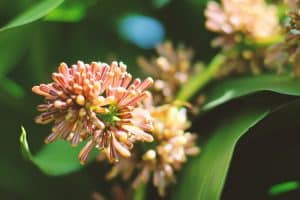 The Trunk of Brazil is a drácena marginata, perennial plant, belonging to the Ruscaceae family, very showy as an indoor plant that, as its name indicates, comes from Brazil, its growth is slow, but as it grows, it loses its leaves interiors until the stem remains, very robust and decorative which can reach a meter in length.
The Trunk of Brazil is a drácena marginata, perennial plant, belonging to the Ruscaceae family, very showy as an indoor plant that, as its name indicates, comes from Brazil, its growth is slow, but as it grows, it loses its leaves interiors until the stem remains, very robust and decorative which can reach a meter in length.
It is very easy to grow, which makes it ideal as an indoor plant and its size looks good even in small rooms where its vertical stem can be seen.
Its foliage is large and stands out for the beauty of its leaves that form rosettes of bright green tones; Its cream or yellow flowers are highly fragrant and appear only on mature plants.
In the garden, the Brazilian trunk can reach several meters in height, but in a pot its growth is more limited.
https://www.complete-gardening.com/gardening/plant-flowers-in-your-garden-the-most-complete-guide/tradescantia/
Kalanchoe
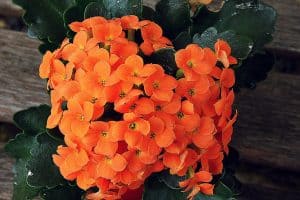 The kalanchoe, also known as The Devil’s Backbone, is a succulent indoor plant. It comes from three continents, Europe, Asia and Africa, although its data is from Madagascar.
The kalanchoe, also known as The Devil’s Backbone, is a succulent indoor plant. It comes from three continents, Europe, Asia and Africa, although its data is from Madagascar.
As has happened with other species, it has been artificially transferred to America and Oceania.
It is a shrubby plant of the Crasulaceae family, which is divided into more than one hundred species, the most popular being the Kalanchoe pinnata, the Kalanchoe Gastonis and the Kalanchoe Daigremontiana, which is the most widely used given its medicinal properties.
It blooms from early winter to mid- spring and is easy to maintain, which is why it has been developed all over the world.
These plants have infinite medicinal properties through their leaves, which have a taste between sweet and acid, with which infusions are prepared that have allegedly been shown to be effective against cancer, especially uterine cancer.
https://www.complete-gardening.com/gardening/plant-flowers-in-your-garden-the-most-complete-guide/kalanchoe/
christmas cacti
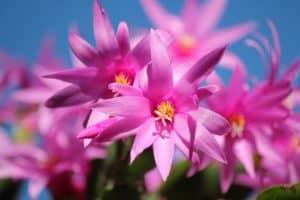 The Christmas cactus is an exotic plant native to Brazil, which belongs to the cacti family, stands out for its colorful and impressive flowers that are shaped like feathers and has spread to many parts of the world.
The Christmas cactus is an exotic plant native to Brazil, which belongs to the cacti family, stands out for its colorful and impressive flowers that are shaped like feathers and has spread to many parts of the world.
It is also defined as winter cactus, Easter cactus, Thanksgiving cactus, or Santa Teresa feathers.
Increasingly, it has been used as a houseplant and an ornamental plant.
It is a totally different cactus from the other species, because it does not have spikes; its colors are pink, red and white.
It is an easy-to-grow plant, although very fragile, because its segments can break for no apparent reason, and for this reason we must take extreme care.
https://www.complete-gardening.com/gardening/how-to-plant-trees-the-guide-you-need-to-get-it-in-12-steps/cactus/christmas/
jade tree
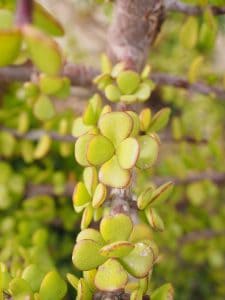 The Jade Tree (Crassula ovata) is one of the most sought after ornamental plants because it is known as the plant of money and friendship, it is said to bring good luck and that is why we see it at the entrance of restaurants and commercial offices.
The Jade Tree (Crassula ovata) is one of the most sought after ornamental plants because it is known as the plant of money and friendship, it is said to bring good luck and that is why we see it at the entrance of restaurants and commercial offices.
It has thick branches and a fleshy texture of a jade green color, very resistant, and it grows very well inside the house where its beauty will notably contribute to making the environment more pleasant.
Its flowering –beautiful white and pink flowers that simulate stars– takes place at the end of winter and beginning of spring.
Jade can reach a meter in height, its growth is slow, so we must have a lot of patience and take care of it carefully, because in the end we will obtain the reward of a plant of great beauty.
In addition, it is one of the most used plants for Feng Shui practices.
https://www.complete-gardening.com/gardening/grow-plants-how-to-cultivate-and-grow-any-plant-in-13-steps/jade-tree/
Ivy
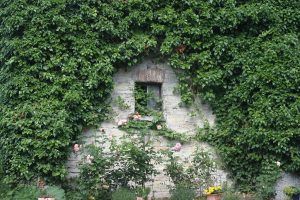 Common Ivy or Hedera Helix is a rustic plant belonging to the Araliaceae family, which comes from Europe, it is also known as Spanish ivy, easy to grow, whose roots sprout from its trunk and are fixed on nearby objects, with dark green leaves., and produces greenish or yellowish flowers.
Common Ivy or Hedera Helix is a rustic plant belonging to the Araliaceae family, which comes from Europe, it is also known as Spanish ivy, easy to grow, whose roots sprout from its trunk and are fixed on nearby objects, with dark green leaves., and produces greenish or yellowish flowers.
For this reason, it is used as a hanging plant, table plant or garden plant, and as foliage in flower arrangements.
There are different types of ivy, but only Hedera Helix and Canary ivy are indoor ornamental plants. Ivy produces a berry- shaped fruit that is toxic to humans and poisonous to animals.
Its vine can cause damage and even drowning of the trees to which it is entangled.
There is also a type of ivy classified as invasive, which grows without control and invades rustic regions.
As it has Perennial foliage, it is usually used to cover walls for ornamental purposes.
https://www.complete-gardening.com/gardening/grow-plants-how-to-cultivate-and-grow-any-plant-in-13-steps/hiedra/
Aglaonema
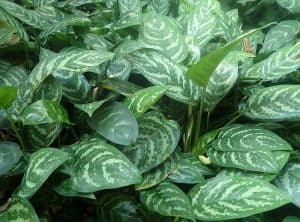 Aglaonema is the term used to describe the various varieties of herbaceous and perennial plants found in the tropical forests of Asia.
Aglaonema is the term used to describe the various varieties of herbaceous and perennial plants found in the tropical forests of Asia.
Specifically they are distributed from Bangladesh to the Philippines and the northern and southern parts of China.
In a pot, inside the house, it reaches a height of 60 centimeters, but in the garden it can reach 150 cm.
Its green leaves, in light and dark tones, are oval and lanceolate and its flowers develop in the form of spikes, in white and light green tones.
Their cultivation is common because they are ideal for interior decoration, and, as they are perennial plants, their cultivation will guarantee a decorative plant for many years.
Aglaonema species, some of them with different adaptability characteristics, are commutatum, costatum, crete, crispum, maria, modestum, pictum, silver bay, silver queen.
And on a smaller scale, the aglaonemas simplex, author, red, pataya and partridge.
https://www.complete-gardening.com/gardening/grow-plants-how-to-cultivate-and-grow-any-plant-in-13-steps/aglaonema/
Aloe vera
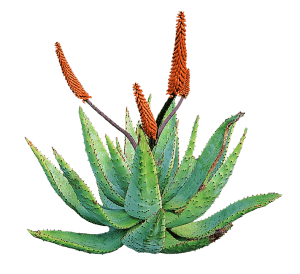 Aloe vera is a plant native to the African continent, the Canary Islands and the Island of Madeira, of the Liliaceae family, known as aloe vera, aloe, aloe, zabira, aloe from Barbados, atzavara vera.
Aloe vera is a plant native to the African continent, the Canary Islands and the Island of Madeira, of the Liliaceae family, known as aloe vera, aloe, aloe, zabira, aloe from Barbados, atzavara vera.
It can reach a height of fifty centimeters, its leaves are fleshy, saw-shaped, pointed, green, like cacti, and it has spread throughout the world like few others.
Who does not know aloe vera, who has not used its qualities to heal the skin, be it in moments of insect bites, burns, sores and ulcers?
Because that is what this indoor and outdoor ornamental plant used for hundreds of years in all parts of the world does.
It is believed that there are three hundred medicinal species of Aloe vera, so of all the indoor ornamental plants, this is perhaps the one with the most therapeutic applications.
https://www.complete-gardening.com/gardening/aloe-vera-planting-care-irrigation-substrate-and-pests/
Ribbon or bow of love
 This perennial or long-lasting indoor plant was born in the bowels of the African continent and from there it spread without major problems throughout the world, due to its great ability to multiply.
This perennial or long-lasting indoor plant was born in the bowels of the African continent and from there it spread without major problems throughout the world, due to its great ability to multiply.
It is known in different ways: love ties or ribbon; tie plant; spider plant and malamadre. Its scientific name is Chlorophytum comosum.
To date, more than 200 different species of this unique plant have been identified, also known in many parts of the world as malamadre, because it proliferates with such ease that many children multiply indiscriminately, which take about 15 days in optimal conditions around of the main.
Of course, they reproduce in large numbers after a discreet white flower emerges at the tip of their stems and becomes a seedling with roots and everything that we can plant in new pots.
https://www.complete-gardening.com/gardening/bond-of-love-or-spider-plant-care-planting-irrigation-and-substrate/
anthuriums
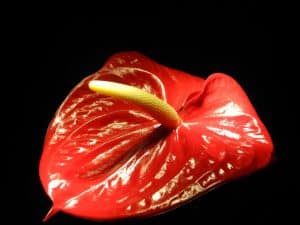 Anthurium or Anthurium is one of the most used perennial herbaceous plants in interior decoration. It reaches a length of between 30 to 40 cm. It has the peculiarity of exhibiting green, red and white tones, which generate intense contrasts, very showy.
Anthurium or Anthurium is one of the most used perennial herbaceous plants in interior decoration. It reaches a length of between 30 to 40 cm. It has the peculiarity of exhibiting green, red and white tones, which generate intense contrasts, very showy.
Its intense green armored or pointed lanceolate leaves are among the most resistant of the different floral species.
The most curious of the Anthurium, however, are the spadix and the spathe, which can hardly go unnoticed.
The spadices are made up of a series of clustered dots, which are actually small flowers capable of creating, all together, a beautiful inflorescence. This curious shape contains the flowers of the plant.
The spathe, for its part, is a wedge-shaped leaf that protrudes and is painted intense red, purplish red, white or apple green, on a bed of very green leaves with a pointed heart.
About 800 species are known around the world.
https://www.complete-gardening.com/gardening/plant-flowers-in-your-garden-the-most-complete-guide/anthurio/
Pothos
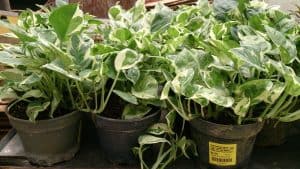 Common name Pothos or Pothos and scientific Epipremnum aureum, is a plant of the species of the Araceae family from Southeast Asia, which can live for many years as long as certain minimum care is met.
Common name Pothos or Pothos and scientific Epipremnum aureum, is a plant of the species of the Araceae family from Southeast Asia, which can live for many years as long as certain minimum care is met.
Although the Pothos is native to Malaysia, New Guinea and Indonesia, it has managed to spread throughout the world, given its great resistance as a creeping plant and great capacity as a very leafy hanging vine, thanks to aerial roots capable of hooking without much difficulty. on any surface.
That is why it reigns easily in windows and balconies or terraces.
Its liana can easily reach about 20 meters in height and its stems can thicken up to 4 centimeters in diameter. Shallow roots catch on neighboring trees.
And its intense green leaves are heart-shaped, with yellow, cream or white striations, which can reach up to 1 meter long and 45cm wide in adulthood.
How to Plant Pothos in your House: [Tips and Complete Guide]
Ficus Benjamina
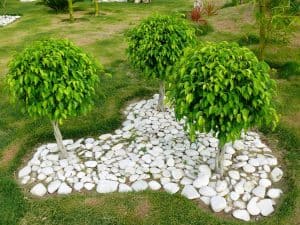 The Ficus Benjamina is a well-known plant worldwide, which is grown both outdoors and indoors.
The Ficus Benjamina is a well-known plant worldwide, which is grown both outdoors and indoors.
It comes from Southeast Asia and belongs to the Moraceae family and in many places it is simply called Ficus.
It has a large grayish-brown bark and does very well in a large pot.
Outside the home, its height can reach up to 30 meters and its very shiny leaves are usually between 5 and 12 centimeters long, with an oval shape and a very unique fall that characterizes the morphology of the entire plant.
Today, there are many varieties with leaves tinged with different colors and stems that are twisted or twisted.
And it is one of the plants that purify the air we breathe, because it is capable of filtering toxic substances present in the earth’s atmosphere.
It does not require great care, but there are some keys that should not be ignored when it comes to having it at home.
https://www.complete-gardening.com/gardening/how-to-plant-trees-the-guide-you-need-to-get-it-in-12-steps/ficus/benjamina/
San Pedro cacti
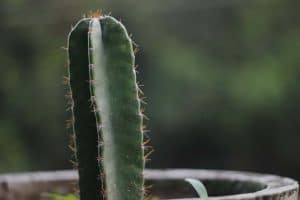 The San Pedro Cactus, with the scientific name Trichocereus pachanoi, genus Echinopsis and family Cactaceae, is a plant native to the Andean Cordillera, where it is capable of growing at an altitude of up to 3,000 m above sea level.
The San Pedro Cactus, with the scientific name Trichocereus pachanoi, genus Echinopsis and family Cactaceae, is a plant native to the Andean Cordillera, where it is capable of growing at an altitude of up to 3,000 m above sea level.
It lives in Ecuador, Bolivia, Peru, Argentina and Chile, but the fame of its beautiful flower has moved it to very distant latitudes of the American continent.
It is not complicated to grow it in a pot, where it grows quickly until it reaches a maximum of 4 meters with the best care. This columnar type cactus adapts to everything, thanks to its superficial roots about 30 cm thick.
Its trunk is green, but with various shades that go from the darkest to the lightest. Crossed by white halos along its ribs, it produces about 7 yellow or brown spines, which grow up to 2 cm.
In ideal conditions, it can reach up to 6 meters in height outdoors.
https://www.complete-gardening.com/gardening/how-to-plant-trees-the-guide-you-need-to-get-it-in-12-steps/cactus/san-pedro/
Zamioculcas
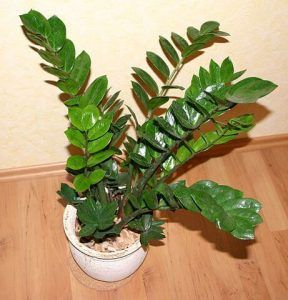 The Zamioculcas or Zamioculca zamicifolia is a very beautiful indoor plant, resistant, with a modern appearance and low maintenance requirements.
The Zamioculcas or Zamioculca zamicifolia is a very beautiful indoor plant, resistant, with a modern appearance and low maintenance requirements.
Native to the African continent, this perennial herbaceous plant has glossy dark green leaves with round leaflets, a thick stem and roots that act as excellent water reservoirs.
Indeed, the Zamioculca grows about 60 centimeters tall thanks to the help of an underground succulent rhizome from which leaves 40 centimeters or a little more sprout.
These leaves are composed of numerous very fleshy elliptical leaflets.
Rubber tree or Ficus elastica
 The so -called Rubber Tree or Hevea brasiliense, is a plant belonging to the Euphorbiaceae family.
The so -called Rubber Tree or Hevea brasiliense, is a plant belonging to the Euphorbiaceae family.
Its origin is Asian, it settles in the tropical jungles. It is considered an epiphytic plant, which are those of slow growth that invade other vegetables, seized by their powerful roots.
But the main variant of these trees is the Ficus elastica or Gomero. It is part of the genus of figs. It grows in northeastern India and western Indonesia, where from 1851 it began to be used as a lower plant.
Its use indoors has become popular for many years to decorate environments. And this despite the fact that it is, par excellence, a tree that grows outdoors, as long as the conditions are the most suitable for its development.
In truth, it is a low-maintenance, easy-care plant that draws a lot of attention for its spectacular shiny oval leaves and its spectacularly elegant stylized bearing.
https://www.complete-gardening.com/gardening/how-to-plant-trees-the-guide-you-need-to-get-it-in-12-steps/ficus/elastica-gomero/

![Photo of Bibio or Bibiones (Bibio spp.): [Concept, Detection, Effects and Treatment]](https://www.complete-gardening.com/wp-content/uploads/2022/08/bibio-or-bibiones-bibio-spp-concept-detection-effects-and-treatment-390x220.jpg)
